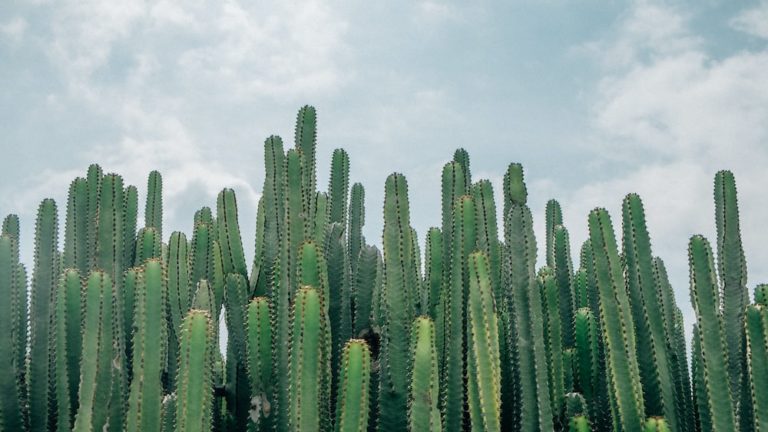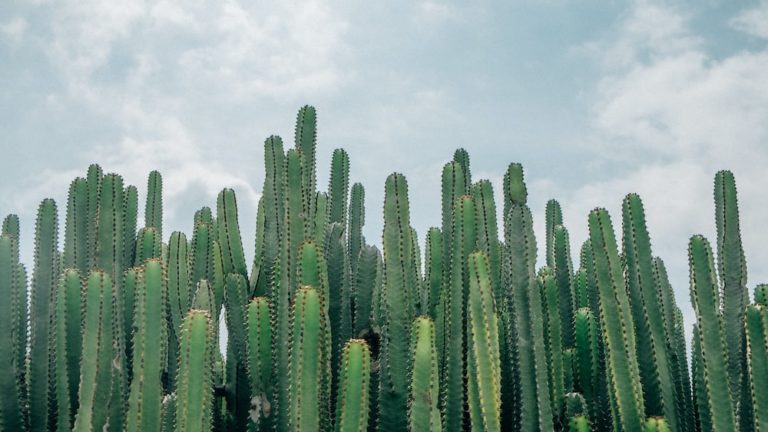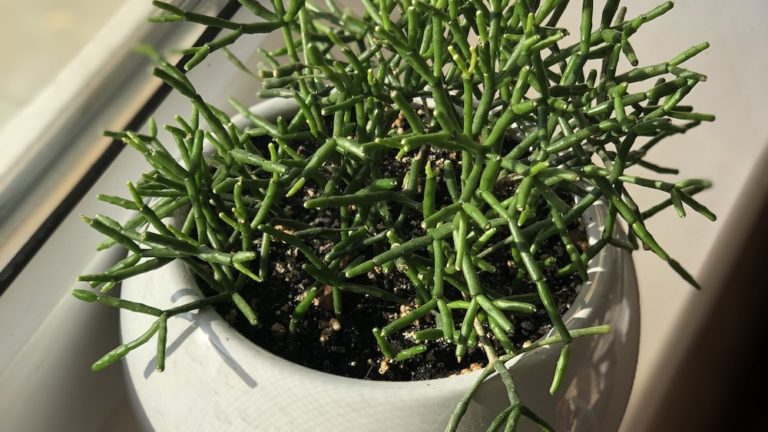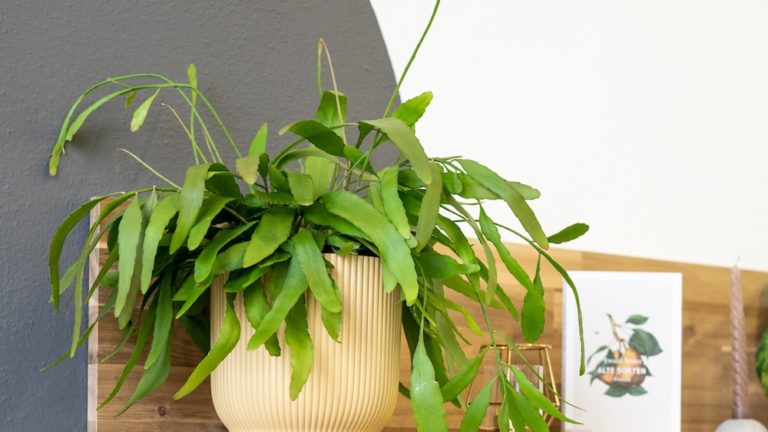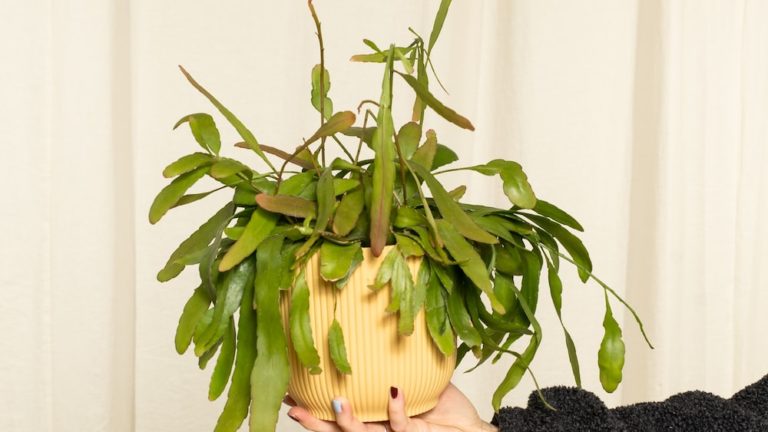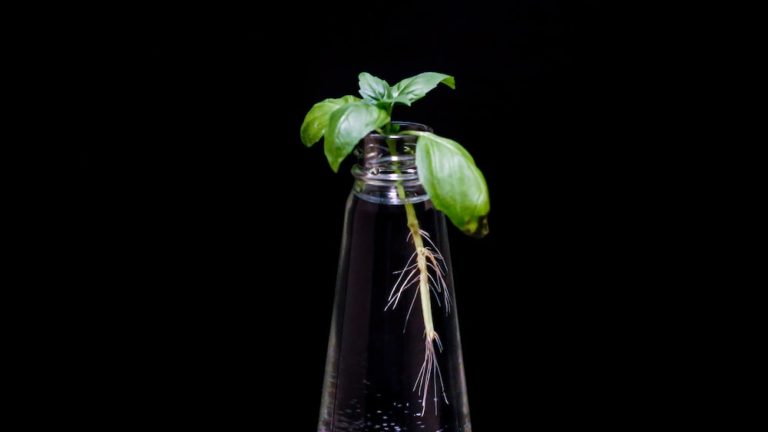Rhipsalis Vs Hatiora: The Ultimate Comparison Guide

Rhipsalis Vs Hatiora: The Ultimate Comparison Guide
Hello there, fellow cacti enthusiasts! Can I just say, what an exciting field we find ourselves in? There is always something new to learn and explore, isn’t there? Today, we’re diving into a comparison guide that uniquely pinpoints the variances and similarities between two amazingly intricate species: rhipsalis and hatiora. As a fervent cacti lover, the anticipation is already overwhelming me. Sure, they might look somewhat similar to a novice eye, but let’s get this straight; rhipsalis vs hatiora is an intriguing debate that’s about to unfold before us, my friends!
Ever since I set foot in my first cacti garden, my heart was stolen by these prickly wonders. Yes, they may not be as tender to touch as your classic roses or as vibrantly colored as your tulips, but there’s something uniquely intriguing about them. After all, how many plants can boast such resilience, constantly challenging the very idea of survival?
To give you a peek into my life, I have a special corner in my garden dedicated to these two types – rhipsalis and hatiora – lovingly nicknamed as my ‘cacti corner.’ The diverse shapes, textures, and colors they bring into my little green sanctuary are simply magical. And now, without further ado, let’s bring to the fore the beguiling worlds of rhipsalis and hatiora!
Understanding Rhipsalis and Hatiora
Before we delve into the mesmerizing world of our cacti stars, rhipsalis and hatiora, it’s essential to first grasp what these unique organisms are. As we journey through their enchanting universe, knowing this will illuminate our path and make our exploration much more enriching.
What is Rhipsalis?
Look around my ‘cacti corner,’ and the first thing to catch your gaze would undoubtedly be the brilliant Rhipsalis. Why you ask? Well, belonging to the family ‘rhipsalideae,’ rhipsalis graces the world with over 60 different species, each more fascinating than the last. They’re not your typical desert-based cacti but are found in the wild, dangling down from trees in tropical rainforests, captivating passersby with their trailing beauty.

But let’s take a moment here to appreciate something utterly shocking about these plants – they are epiphytic cacti! Yes, my friend, you heard me right. Residing in tree crevices, they abscond from their conventional desert habitats and exquisitely adapt to the most unexpected environments. Isn’t nature a bag full of surprises?
Rhipsalis, the epiphytic cacti found in tropical rainforests, adapt to unexpected environments and surprise with their trailing beauty.
What is Hatiora?
Now, shifting our gaze a little further in my ‘cacti corner’, meet Hatiora – a dynamic, diverse, and absolutely delightful creature. It occasionally leaves visitors gasping at its striking demeanor. Belonging to the same family, ‘rhipsalideae,’ hatiora brings to the table around six species that thrive in the diverse South American rainforests.
But here’s the magical part – during spring, hatiora breaks out into a festival of blooming flowers, transforming it from a humble green beauty into a vibrant extravaganza. As one stands there, enchanted by the yellow, fuchsia, or orange blossoms adorning the plant body, one can’t help but marvel at this tiny manifestation of nature’s timeless drama.
One personal anecdote that I think you’ll appreciate is my desperate yet joyful efforts to spot the blooming of what’s fondly termed as the “Easter Cactus,” showcasing a riot of radiant red blooms. The memory of that golden hour, the soft petrichor mingling with aromatic cacti flowers, still brings a soft smile on my face.
Origin and Distribution of Rhipsalis and Hatiora
With a broader understanding of rhipsalis and hatiora, let’s delve further into their history and regional distribution. It’ll take us on an adventurous trek from the unique geographical formation of South America to the quaint corners of your local botanical gardens.
Origin of Rhipsalis
Rhipsalis has painted its green hues on the canvas of nature since time immemorial. The plant is native to the tropical rainforests of Central and South America, primarily in regions spanning Costa Rica, Uruguay, and many Caribbean islands. Boldly venturing into the vast expanse, it is recorded as the only cactus species to naturally reach as far as Africa, Madagascar, and Sri Lanka!
But how, you ask? I still recall my amazement when I discovered that this geographical miracle was a result of long-distance bird dispersal during the Miocene epoch. One can hardly imagine these tiny birds unknowingly transporting seeds over colossal oceanic barriers, can you?
Origin of Hatiora
While we trace back to the roots of Hatiora, a notable point about this botanical gem is its South American origin. It dwells mostly in the Brazilian rainforests, weaving its natural charm through the forests of São Paulo and Minas Gerais. The plant’s adaptation to this niche habitat arts the tale of evolution’s magic.
Back in college, one of my professors told this beautiful anecdote about how the growth patterns of hatiora form a fascinating mosaic of evolution. Their unique epiphytic growing habit, he reasoned, was an outstanding demonstration of nature’s survival strategies. A quiet afternoon, that professor’s wistful gaze, and his loving tone when he talked about these resilient plants, those details are still etched in my memory.
However, it wasn’t until my first botanical expedition to the Serra da Mantiqueira in Brazil that I truly grasped Hatiora’s ecological significance. Their presence in the Atlantic Forests unraveled a deeper understanding about the region’s unique flora, painting a picture of a timeless ecological theatre!
Distribution and Habitat of Rhipsalis
Rhipsalis, elegant and versatile, has a rather wide distribution range. While its natural habitat rests in the tropical rainforests, today it has been cultivated worldwide, growing in botanical gardens, homes, and commercial greenhouses alike. Interestingly, it also thrives in the outdoor landscapes of warmer climates, reminiscing of its ancestral territories.
A recent study by cacti expert Len Newton pointed out how, unlike most cacti that dwell in arid deserts, Rhipsalis took an alternative route in evolution, adapting to lush rainforests and making aerial roots to absorb atmospheric moisture. This adaptable nature of Rhipsalis is what makes it a favorite of many botanists, especially those, like me, who enjoy a bit of surprise in their gardens.

Distribution and Habitat of Hatiora
Hatiora, on the other hand, remains true to its home ground. While found in greenhouses and botanical gardens worldwide, Hatiora still shows its best colors in the context-rich rainforests of South America. As an epiphytic plant, it resides on the giant tropical trees, drawing nutrients from air, rain, and decomposing debris around it, decidedly different from your typical ground-bound plants.
It’s no lesser than poetic justice to see how Hatiora has, over time, painted the otherwise monochromatic green shades with beautiful, vibrant colors. In a splurge of spring, it stands out as a colorful beacon among the dense and robust rainforest trees. Evidently why it adds such a fascinating sling to the story of rhipsalis vs hatiora!
Hatiora adds a fascinating splash of color to the monochromatic rainforest, standing out as a vibrant beacon among the dense trees.
Characteristics of Rhipsalis and Hatiora
Armed with a better understanding of their origins and distribution, let’s identify these botanical beauties more closely by observing their character. A cursory glance might not do justice to the multitude of features they showcase. Shall we?
Description of Rhipsalis
Meet Rhipsalis, in all its aesthetic glory. Its endearing mess of green stems, bumbling and cascading down the pot, has a somewhat wild, jungle-like flair. Its stems, cylindrical or flat, are sectioned at intervals, and the whole plant harbors a rich green hue that’s appealing to the eye.
Though thorn-less, Rhipsalis does not lack in displays when it comes to show-stopping moments. Come late winter or spring, small whitish or yellowish flowers bloom all over it, later developing into berry-like fruits. The surreal charm of these tiny flowers dotting the entangled green stems simply cannot be put into words, and trust me, they’ll make you fall in love with these creatures called cacti!
Description of Hatiora
Settle in, dear reader, and let my words paint a succulent scene of the Hatiora. Unlike her cousin, the cacti, she’s not dressed in layers of sturdy, protective prickles. No, she’s a gentler soul, with a softer, more ephemeral form. Thin, segmented, pendant branches drape down, cascading like a waterfall in shades of green.
You can almost visualize it, can’t you? Her cylindrical segments, dancing with every gust of wind, capped off with delicate flowers in the softest hues of yellow. Cacti on the outside, fairy on the inside, you might say, as you consider the Hatiora in its rare and tender beauty.
Size and Growth Habit of Rhipsalis
With a sense of wonder, let us now journey to the realm of Rhipsalis. A mighty member of the cacti family, her growth is a marvel to behold. Her jade-green body promises lengthy tendrils, dangling down in a brilliant emerald cascade.
Imagine a waterfall, frozen in time, its rivulets solidified into the lush, willowy fronds of the Rhipsalis. An average mature Rhipsalis can reach lengths ranging from 10 to 40 cm. However, in her true whimsical fashion, certain Rhipsalis species can reach awe-inspiring lengths of up to 6 meters! In full bloom, her growth habit is quite the visual spectacle, infusing spaces with an ethereal, almost jungle-like charm.
Now, what could foster such resplendent growth, you ask? In part, it’s all due to the genus Rhipsalis’ clever ecological adaptation. Equipped with the tenacity and adaptability typical of her family, she has carved her own nook in the plant world with her ability to pursue life in a hanging, ‘lepismium-like’ manner, tracing her roots back to the rainforest canopies.
Size and Growth Habit of Hatiora
Let’s loop back to our friend, the Hatiora, mirroring and rivaling her exotic cousin, Rhipsalis, in ways more than one. The hatiora’s growth habit is an intriguing blend of charm and resilience, radiating an essence of quiet strength.
Bearing similarities to Rhipsalis, her stems are likewise elongated and hang freely, though not quite as long. Typically they reach lengths of around 20 cm to 30 cm. This lesser growth can be attributed to their modest disposition and unassuming beauty.
Yet, despite their gentler exterior, Hatioras never fail to pack a surprise. During the blooming season, they burst forth with a stunning array of miniature, star-shaped flowers, coating her pendulous branches — truly a spectacle no plant lover could resist.
The Hatiora’s growth habit combines charm and resilience, with stems that reach lengths of around 20 cm to 30 cm, and surprises with a stunning array of miniature, star-shaped flowers during the blooming season.
Care Guide for Rhipsalis and Hatiora
Entranced by their unique charm and eager to welcome these beauties into your home? Let’s embark on an enlightening journey, exploring the care requirements of Rhipsalis and Hatiora. Prepare yourself to delve deep into the fascinating world of these two exotic gems.

Light and Temperature Requirements
For these sun-loving sisters, Rhipsalis and Hatiora, the right balance of light and temperature is the secret sauce to keep them vibrant and flourishing. Both these representative of the Cactaceae family prefer bright, indirect sunlight.
If rendered exposed to harsh direct sunlight, their tender surfaces may get singed, leaving unsightly patches on the plant’s body. However, they do enjoy the warmth. Try to maintain room temperatures between *70°F to 80°F during daytime, dropping to about 60°F at night, to replicate their native tropical climate.
Watering and Feeding Guidelines
Rhipsalis and Hatiora, like all cacti relatives, are storehouses of resilience. Being epiphytes, they have adapted to make the most of limited water supplies. However, their watering needs depend on the environment they’re planted in.
As a general guideline, wait for the top layer of the soil to dry out before the next watering. Water thoroughly, but sparingly, ensuring the plant is never waterlogged.
Regarding feeding, both plants benefit from a water-soluble, balanced cacti fertiliser during the growing season. Tuned to their special needs, it can give your vibrant companions the nourishment they need to remain thriving and aesthetically pleasing.
Soil and Transplanting Tips
The soil these beauties thrive in must be light, airy, and well-draining. Rhipsalis and Hatiora prefer potting mixes typically suited for epiphytic plants. A blend of cacti soil, peat, and perlite, usually does the trick!
When the roots fill the current pot, it’s time to transplant them into a larger container. The best time to do this is during the rest period, providing them ample time to adjust to the new environment before the next growth spurt.
To ensure the thriving of Rhipsalis and Hatiora plants, it is important to use a well-draining potting mix, such as a blend of cacti soil, peat, and perlite, and to transplant them into a larger container when their roots outgrow the current pot.
Maintenance and Grooming
Maintenance is an area where your botanical friends are pleasantly low-maintenance. Grooming, however, can be subjective based on personal preference.
Some enthusiasts prefer the Rhipsalis and Hatiora in their untamed, wilder form, fully appreciating their intrinsic natural beauty. However, avoiding the overly shaggy look might require occasional pruning of yellowing or shrivelled segments.
Propagation of Rhipsalis and Hatiora
The propagation of Rhipsalis and Hatiora can be an engaging and rewarding venture. It’s often pursued by plant lovers seeking to extend their collection of these enchanting specimens or share these delights with, family and friends.
Propagation of Rhipsalis
Rhipsalis lends itself wonderfully to vegetative propagation. It’s as simple as cutting a healthy plant segment, letting it dry for a few days, and then planting it in a well-drained mixture.
With patience and precise care, you will find yourself the proud parent of a new, thriving Rhipsalis shoot before long. Yours to cherish or share, in this wonderful world of Rhipsalis vs Hatiora.
Propagation of Hatiora
Sowing the magic of Hatiora salicornioides isn’t nearly as prickly a task as one might assume. From my memory’s vaults, I fondly recollect the first time I propagated Hatiora from a cutting. Small and defenceless, it was nothing more than a tender sprig.
I’d placed it in a small pot filled with a well-draining peat-based mix as recommended by a study cited in the Journal of Applied Horticulture (Raviv et al., 2019). With its delicate rays stretching towards the sun, it took root and over time, flourished to replicate its parent’s majestic beauty.

Common Issues with Rhipsalis and Hatiora
Despite the inherent resilience of our spiky friends, common maladies can afflict both home plants rhipsalis and hatiora salicornioides.
Pests and Diseases
From soft and fleshy Rhipsalis baccifera to the cylindrical silence of Hatiora, both sets of my thorny treasures have, at times, suffered the wrath of pests and diseases.
Minute mealybugs, for instance, take a distinct liking to our prickly subjects. Rooting themselves deep within the plant’s crevices, their influx affects the plant’s vitality. A mixture that I’ve found profoundly useful in such cases involves dabbing the affected area with a cotton swab doused in alcohol.
Speaking of diseases, I always keep an eye out for any discoloration. A yellow hue may indicate overwatering, whilst black spots might be a sign of fungal infection, in which case, a thorough regimen of commercially available fungicide is invaluable.
Toxicity
It’s important to remember that while the aesthetic beauty of cacti is irresistible, they hide an unseen danger. Both Hatiora and Rhipsalis have been classified as non-toxic to pets by the American Society for the Prevention of Cruelty to Animals (ASPCA). However, accidental encounters with their sharp spines might lead to discomfort or injuries.
Intensive research in this domain should be integral to any comprehensive care guide. After all, our plant friends share our living space, and we must do our utmost to ensure every creature’s safety, big or small.
Additionally, the spines can potentially cause skin irritation in humans. Always handle the cacti with care and use gloves if necessary to prevent any accidental injuries.
Handle cacti with care and use gloves if necessary to prevent accidental injuries from their sharp spines.
FAQs
1. What are the main differences between Rhipsalis and Hatiora?
When considering the main differences between Rhipsalis and Hatiora, one might observe that the former bears pendulous, spaghetti-like stems inclined to cascade, whereas Hatiora, in contrast, sports erect, jointed stems reminiscent of bamboo.
2. How to distinguish Rhipsalis from Hatiora?
Distinguishing Rhipsalis from Hatiora becomes an easier task once you notice that Rhipsalis is notable for its cylindrical, dangling stems, while Hatiora predominantly features upright, jointed growth.
3. Can Rhipsalis and Hatiora be grown together?
Indeed, Rhipsalis and Hatiora can be grown together as both demand similar habitat conditions, such as bright but filtered sunlight and a boost in humidity levels.
4. What are the common problems in growing Rhipsalis and Hatiora?
Common problems in growing Rhipsalis and Hatiora gravitate around inadequate watering, lighting conditions, or pest infestations.
Conclusion
As we close our intricate exploration through the bristled world of Rhipsalis vs Hatiora, let us carry forward the enlightening observations we’ve gathered.
From the hanging strands of Rhipsalis baccifera that whisper secrets of the Amazonian Rainforest, to the bamboo mimicry of the Hatiora salicornioides that paints a picture of Brazilian landscapes, these two cacti species bring a unique flair to our homes.
Remember, the bond between a green thumb and their cacti is deeply intimate, one of resilience, beauty, and continual learning. So let’s tread along this prickly path with love and reverence, ensuring our spiky companions feel as cherished as they make us feel. Farewell, dear fellow cacti lovers. Until we meet again. With all the love, Sophia.

